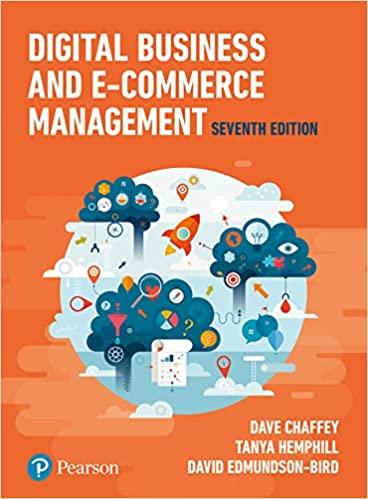Question
The Question is . for the following case, Prepare a comparative cost analysis of the make/buy alternatives. Which cost elements should be investigated particularly carefully?
The Question is . for the following case, Prepare a comparative cost analysis of the make/buy alternatives. Which cost elements should be investigated particularly carefully? Discuss thoroughly.
Case:
Maine-Barnes was a successful small firm that had carved out a profitable niche in the electronic office products field. A proposed new line of sophisticated professional calculators currently posed some manufacturing problems for the firm because of limited shop capacity. Josh Purdy, the firm's supply management director, was asked to investigate the possibility of subcontracting one of the components to an outside sourceand then to prepare a make-or-buy recommendation for the general manager. Maine-Barnes was located near Boston in the heart of a high-tech manufacturing community. The firm's success was due primarily to its ability to produce high-quality specialty products designed for particular professional uses by engineers, architects, medical researchers, financial analysts, and so on. Product technology in the field was undergoing continual change. As a result, product prices had dropped markedly during the past two years, and competition in the market was keen and fast paced. The proposed line of new calculators was designed to be highly price competitive. Consequently, a permanent rechargeable battery powered the units. This meant that each unit was sold with a small plug-in recharging unit. Although the recharger increased the initial cost of the unit somewhat, the user realized significant operating cost savings during the life of the product. In addition to an attractive life cycle cost, Maine-Barnes was banking on several unique proprietary design features of the calculator and the recharging unit to generate a high demand for the new product line. Unfortunately, the new design features were not patentable. Despite the general manager's optimistic views for the new product line, the marketing manager was unable to forecast demand for the new units with what he considered to be a comfortable level of accuracy. Because of competition and rapidly changing technology in the industry, he was not willing to forecast first-year sales of more than 50,000 units. If the line was well received, he estimated that approximately 100,000 units could be sold in each of the two succeeding years. Maine-Barnes had grown steadily during the past five years and was now operating near its manufacturing capacity. The shop manager cautioned that addition of the new calculator line would stretch the operation to its limit. In fact, further analysis revealed that the shop could handle no more than 75,000 new calculator units per yearand this was without producing the companion recharger units. If Maine-Barnes were to produce the recharger units too, it would have to invest approximately $84,000 in new equipment. The life of the equipment would be approximately twelve years. For tax purposes, however, the Internal Revenue Service would permit it to be depreciated over a seven-year period. As a result of the preceding analysis, Josh Purdy requested bids from three former suppliers for the new recharger unit. All three were known to be competent and reliable; their bids are summarized below. BIDS ON THE RECHARGER UNIT ($ per unit)
| Purchase qty. 50,000 75,000 100,000 | Eastern Mfg. $8.15 7.68 7.06 | Boston Electrical $7.45 7.12 6.79 | D & A Mfg. $7.82 7.45 7.10 |
In response to Josh's inquiry, all three firms indicated an interest in discussing the possibility of a three-year, single-source contract. All were willing to discuss bid prices further if a three-year deal could be worked out. After reviewing the bid figures, Josh discussed the possibility of making the recharger inhouse with the shop manager and the firm's chief cost accountant. Several days later, Josh received the following estimated cost data from the controller's office.
In-house unit costs to make the recharger Direct labor $1.50
| Direct Labour Materials Factory overhead (110% direct labor) Factory cost General administrative and selling expense (10% factory cost) | $1.65 3.00 1.65 6.15 0.62 |
| 6.77 per unit |
Notes: 1. Materials cost includes a 20 percent internal material handing cost. 2. Factory overhead is estimated to be 35 percent variable and 65 percent fixed.
After studying the cost estimate, Josh was not certain that it was complete. For example, he wondered why an allowance of 15 percent had been made for scrap material but none for labor. He was also puzzled about the overhead figures. The controller indicated that there would be no reduction in overhead if the new equipment was purchasedand that the amortization of the new equipment would constitute an additional expense. Josh was also aware that the firm's labor contract expired in several months. In the past, subcontracting work to outside suppliers had always been a sensitive issue with the union, although wage rates seemed to be particularly important this year.
Step by Step Solution
There are 3 Steps involved in it
Step: 1

Get Instant Access to Expert-Tailored Solutions
See step-by-step solutions with expert insights and AI powered tools for academic success
Step: 2

Step: 3

Ace Your Homework with AI
Get the answers you need in no time with our AI-driven, step-by-step assistance
Get Started


